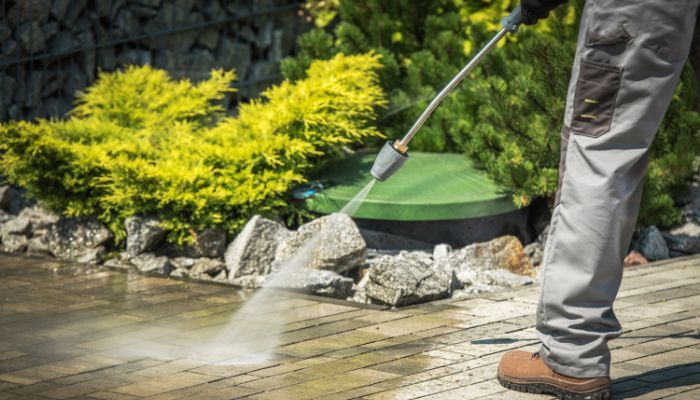Harvest Season Hardwood: Tips to Keep Your Floors Gleaming
Welcome to our guide on hardwood floors and the tasks associated with taking care of these wood surfaces! Here, we will discuss understanding the impact of the harvest season on hardwood, daily maintenance tips for lustrous floors, tackling your hardwood seasonal challenges, and the essential products for floor care. Let’s dive right into the wonderful world of hardwood flooring!
Understanding the Impact of the Fall Season and Cleaning Your Homes Hardwood Flooring
As the vibrant colors of autumn foliage grace our surroundings, it’s essential to recognize the unique impact that the fall season can have on the hardwood flooring in our homes. The fall season brings with it a medley of challenges for hardwood floors, from increased moisture levels due to rain and damp leaves being tracked indoors to potential temperature fluctuations. Understanding these factors is pivotal in ensuring the longevity and beauty of your hardwood flooring. It’s a season where proactive maintenance and care play a crucial role in preserving the luster and structural integrity of your floors.
Daily Maintenance Tips for Lustrous Hardwood Floors
Hardwood floors require regular maintenance to remain lustrous and beautiful for years to come. The type of daily cleaning and polishing will depend on the type of hardwood flooring one has. Hardwood floors need to be swept or vacuumed regularly to remove excess dirt and dust that could otherwise be ground in if it is walked on. Moreover, hardwood floors should also be mopped at least once a week with a damp mop or damp cloth. It is important not to use too much moisture while mopping as this can cause damage to the hardwood floors.
In addition, hardwood floors should be given an occasional waxing or polishing to bring back their shine. However, when waxing it is important to be careful not to wax too often as this can wear away the floor’s protective finish. For instance, once every month is sufficient for higher traffic areas such as entryways, and once a year should be sufficient for low traffic areas.
It is also important to remember to use hardwood floor cleanser instead of detergents or soaps when cleaning hardwood floors, as these can damage the flooring. Similarly, never put wax polish in areas that are exposed to direct sunlight, as this will cause the wax to discolour and streak the wood. Furthermore, rugs can also be used to prevent excess dirt and moisture from entering the hardwood floors.
Finally, it is important to be careful to not slide heavy furniture across the hardwood floors as this can cause scratches and other types of damage. To avoid this, furniture should instead be lifted instead of dragged whenever possible. As a result, homeowners can ensure that their hardwood floors remain lustrous and beautiful for many years to come.
Tackling Your Homes Hardwood Seasonal Challenges: Moisture Debris and More
Hardwood flooring is a common sight in many homes, but it can also come with seasonal challenges. Curating hardwood flooring for any season requires vigilance and maintenance, as any wear or damage may stain its appearance. Therefore, understanding how to best combat moisture, debris, and more can protect the lifetime of the hardwood flooring, while maintaining it through the changing of the seasons.
Moisture can bring with it several issues for hardwood, including warping, swelling, and discolouration. It is important to be aware of potential areas that could be more susceptible to moisture, such as near exits and entries, in bathrooms, and in other areas prone to spilling. Moreover, inspecting the floor regularly will ensure the early detection of any water damage, allowing quicker action and repair if needed. Furthermore, a dehumidifier may be necessary to maintain a lower humidity, as well as a humidifier in the cooler months to keep the wood’s moisture balance in check.
Similarly, debris such as dirt and leaves can be a nuisance, and buildup can cause scratching or discolouration. On the other hand, due to its nature, hardwood flooring is relatively easy to sweep and mop. Making sure to do this on a weekly basis is important as it will help make small messes easier to clean. In addition, it is also a good practice to clean the hardwood surface with a vacuum or clean clothes almost every day to maintain the floor’s shine and sparkling appearance.
In contrast to natural debris, the most common threat for hardwood can be scratching or gouging. Each type of hardwood flooring is typically graded according to hardness. If a softer type of hardwood flooring is installed in a home, more precautionary measures must be taken in order to avoid damage. This can include using furniture sliders underneath any furniture pieces to avoid sliding, as this can cause scratches and dents. Another important practice is using felt pads or cups underneath furniture legs to provide a barrier between the hardwood and furniture.
As a result, by taking proactive steps and understanding the nuances of hardwood flooring, the longevity and look of the hardwood flooring can be maintained throughout each season. While moisture, debris, and more are inevitable, vigilance and precautions can ensure a seamless hardwood flooring experience. Hardwood flooring can remain a reliable and beautiful flooring option for any home.
Essential Products for Hardwood Floor Care
Hardwood floors are an attractive addition to any room, but they require special care to ensure their beauty. Essential products for hardwood floor care include a quality mop, hardwood cleaner, dust mop, floor mat, and area rug.
Firstly, a quality mop is essential for hardwood floors. Having the right mop can make a big difference when it comes to protecting the floor and keeping it tidy. Look for one that is designed specifically for hardwood because its material won’t damage the wood. A mop with a built-in wringer will ensure all the excess water and cleaning solution is wrung out to prevent any damage caused by excess moisture.
Second, a good quality hardwood cleaner is necessary. Regular cleaning using the correct product will help keep the hardwood looking brand new, free from dirt and debris. Quality cleaners will also nourish the wood, making it more resistant to scratches and dents.
A dust mop is also important for hardwood floors. This will help to get rid of dust, dirt and pet hair that falls between cleanings. Don’t forget to choose a dust mop specifically made for hardwood.
A floor mat is also essential to keep from damaging hardwood floors. Place a mat near any entrance to your home to protect it from dirt and debris that can get tracked in. Make sure you choose a mat that is specially-made for hardwood floors.
Finally, area rugs are important for both protecting hardwood floors and for decorating. Area rugs act as an extra layer of protection between the floor and heavy furniture, while also adding warmth to the room. Stick to area rugs that are made specifically for hardwood floors in order to avoid damaging the wood. It’s essential to invest in the right products for hardwood floor care in order to keep the floor looking at its best. Before purchasing, make sure to do a bit of research to determine which products will best suit your hardwood floors.
Conclusion
Each season presents unique challenges for hardwood floors, from the sweltering heat of summer to the cold and moisture of winter. By being attuned to these seasonal variations, homeowners can make informed decisions regarding their floor care routines and ensure the longevity of their investment.
Maintaining the natural grace of hardwood entails more than just seasonal awareness—it demands consistent care and attention. Proper wood maintenance involves routine cleaning, polishing, and the use of protective measures such as rugs and furniture pads to prevent unnecessary wear and tear. Investing in essential items, such as high-quality hardwood cleaners and microfiber mop systems, not only saves time and money but also contributes to the long-term preservation of the wood’s beauty. With diligent maintenance, hardwood floors can stand the test of time, becoming a cherished feature of a home for generations to come.
Frequently Asked Questions
How do I protect my hardwood floors from harvest debris?
To protect your hardwood floors from harvest debris, consider implementing several measures. Start by placing durable, dirt-trapping mats at entryways to capture dirt, leaves, and debris before they make their way onto your floors. Regularly sweep or vacuum your floors to remove any accumulated debris. During harvest season, be especially vigilant about keeping your floors clean. Additionally, avoid dragging heavy or sharp objects across the floor to prevent scratches and gouges. If you anticipate heavy foot traffic with debris, consider using protective shoe covers or encouraging guests to remove their shoes when entering your home. By taking these precautions, you can minimize the impact of harvest debris on your hardwood floors.
What’s the best way to clean hardwood floors without damaging them?
The best way to clean hardwood floors without damaging them is to use a gentle and appropriate cleaning method. Start by regularly dusting or vacuuming your floors to remove loose dirt and debris. Use a microfiber mop or a soft, damp cloth to clean the surface, avoiding excess moisture that can seep into the wood and cause damage. Choose a hardwood floor cleaner that is specifically formulated for hardwood surfaces and follow the manufacturer’s instructions. Avoid using harsh chemicals, excessive water, or steam cleaners, as these can harm the finish and wood. By adopting a gentle cleaning routine and being mindful of the products you use, you can maintain the beauty of your hardwood floors.
How can I prevent scratches from harvest season foot traffic?
Preventing scratches from harvest season foot traffic requires a combination of protective measures. Start by placing rugs or runners in high-traffic areas to reduce direct contact between shoes and the hardwood floor. Encourage family members and guests to remove their shoes when entering the home or provide shoe covers for protection. Regularly trim pets’ nails to prevent accidental scratches. Additionally, consider using furniture pads or felt protectors on the legs of chairs and tables to prevent them from scratching the floor when moved. By taking these precautions and being mindful of foot traffic during harvest season, you can minimize the risk of unsightly scratches on your hardwood floor



